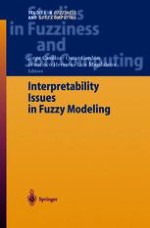2003 | OriginalPaper | Chapter
Effect of Rule Representation in Rule Base Reduction
Authors : Thomas Sudkamp, Aaron Knapp, Jon Knapp
Published in: Interpretability Issues in Fuzzy Modeling
Publisher: Springer Berlin Heidelberg
Included in: Professional Book Archive
Activate our intelligent search to find suitable subject content or patents.
Select sections of text to find matching patents with Artificial Intelligence. powered by
Select sections of text to find additional relevant content using AI-assisted search. powered by
An objective of merging rules in rule bases designed for system modeling and function approximation is to increase the scope of the rules and enhance their interpretability. The effectiveness of rule merging depends upon the underlying system, the learning algorithm, and the type of rule. In this paper we examine the ability to merge rules using variations of Mamdani and Takagi-Sugeno-Kang style rules. The generation of the rule base is a two part process; initially a uniform partition of the input domain is used to construct a rule base that satisfies a prescribed precision bound on the training data. A greedy algorithm is then employed to merge adjacent regions while preserving the precision bound. The objective of the algorithm is to produce fuzzy models of acceptable precision with a small number of rules. A set of experiments has been performed to compare the effect of the rule representation on the ability to reduce the number of rules and on the precision of the resulting models.
